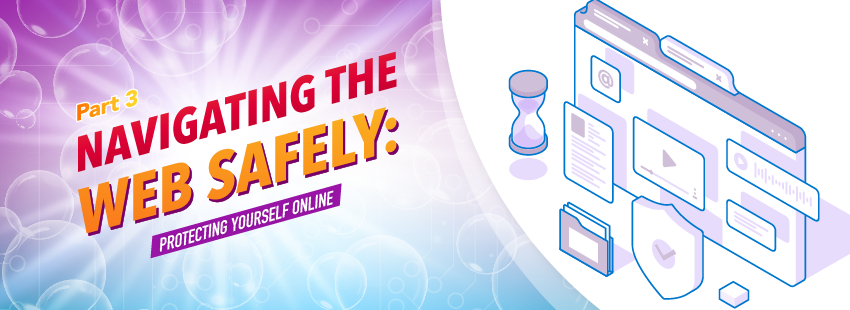Introduction
Welcome to Part 3 of our blog series on Cyber Hygiene: “Navigating the Web Safely.” In this installment, we delve into the importance of practicing safe browsing habits to protect yourself from various online threats. With cybercriminals constantly seeking opportunities to exploit unsuspecting users, adopting security measures while browsing the web is crucial. Verifying website security and employing safe browsing practices can significantly reduce the risk of falling victim to malicious activities. Let’s explore how you can navigate the web safely and safeguard your digital well-being.
Verifying Website Security:
When visiting websites, verifying their security to protect sensitive information is essential. Look for the padlock symbol and “https” in the website’s URL. The padlock symbol indicates that the website has an SSL (Secure Sockets Layer) certificate, which encrypts the data transmitted between your device and the website’s server. The “https” in the URL signifies that the website has a secure connection.
Websites without an SSL certificate may expose your data to potential eavesdropping or unauthorized access by third parties. It is crucial to exercise caution when sharing personal information, especially on websites lacking proper security measures.
Recognizing and Avoiding Phishing Attempts:
Phishing is a common online threat where cybercriminals attempt to deceive users into sharing sensitive information such as passwords, usernames, or financial details. Phishing attacks often occur through emails, text messages, or fake websites that mimic legitimate entities.
To protect yourself from phishing attempts, be wary of unsolicited communications requesting personal or financial information. Legitimate organizations rarely ask for sensitive information via email or text. Avoid clicking suspicious links or downloading attachments from unknown sources, as they may lead to malicious websites or malware installations.
If you receive a suspicious communication, verify its authenticity independently. Contact the organization directly through their official channels to confirm the request or report any potential phishing attempts.
Employing Browser Extensions and Security Tools:
Browser extensions and security tools offer additional layers of protection while browsing the web. These tools can help identify and block malicious websites, prevent unauthorized tracking, and provide warnings about potentially harmful content.
Consider installing reputable browser extensions with features such as ad-blocking, anti-malware scanning, and enhanced privacy settings. These tools can enhance your browsing experience while keeping you safe from potential threats.
Conclusion:
Practicing safe browsing habits is paramount in today’s digital landscape. By adopting security measures such as verifying website security, recognizing and avoiding phishing attempts, and employing browser extensions and security tools, you can significantly reduce the risk of falling victim to online threats.
In Part 3 of our blog series on Cyber Hygiene, we have explored the importance of navigating the web safely. Remember to always verify website security, exercise caution when sharing sensitive information, and stay vigilant against phishing attempts.
Stay tuned for Part 4, where we delve into the importance of data protection measures to safeguard your valuable information. By consistently practicing cyber hygiene, you empower yourself to protect your digital well-being and contribute to a safer online environment.






